流体-構造相互作用を利用した柔軟な動脈内の血流の数値シミュレーション

経歴
今日の科学および工学におけるシミュレーション タスクの多くでは、精度の要件がますます高まっており、複数の物理的効果を考慮する必要がますます高まっています。 モデリングと計算の問題の両方に関して最も重要であり、このようなマルチフィジックス問題の中で最も困難な問題は、流体構造相互作用 (FSI)、つまり、可動または変形可能な弾性構造と内部または周囲の流体の流れとの相互作用です。 FSI の発生の種類は豊富で、航空機の翼やタービンブレードのバタつきから動脈の血流にまで及びます。 これらの振動相互作用の影響を無視すると、特に疲労を受けやすい構造では壊滅的な結果が生じる可能性があります。
分析の説明
デモンストレーションを支援するため リスケールの これらの複雑な複合物理問題をモデル化する際にエンジニアや科学者を支援するために、流体構造相互作用を使用して柔軟な動脈内の血流の数値シミュレーションを実行しました。 血流のモデリングには、さまざまな物理プロセスを正確に表現する上で、いくつかの特有の課題があります。 本質的に、血液は非ニュートン流体であり、その粘度はせん断速度によって変化します。 もう XNUMX つの課題は、動脈材料自体が複雑で、各層が異なる特性を持つ複数の層で構成されていることに関係しています。 さらに問題を複雑にしているのは、動脈壁を通過する内部血流の圧力の変化によって動脈壁が変形することです。 これらの動脈壁は、血圧の上昇に応じて拡張し、圧力が下がると収縮します。 ただし、これらの変形は内部血流自体の圧力にも影響を与えるため、解決すべき結合過渡システムが定義されます。
図 1 と図 2 は、それぞれ構造ソルバーと流体ソルバーの単純な解析モデルを示しています。 円筒構造モデルは、内径 22 mm、固定壁厚 2 mm、長さ 55 mm で構成されています。 FEA モデルは 7,776 個の要素で構成され、流体ドメインは 20,480 個の六面体セルで構成されます。
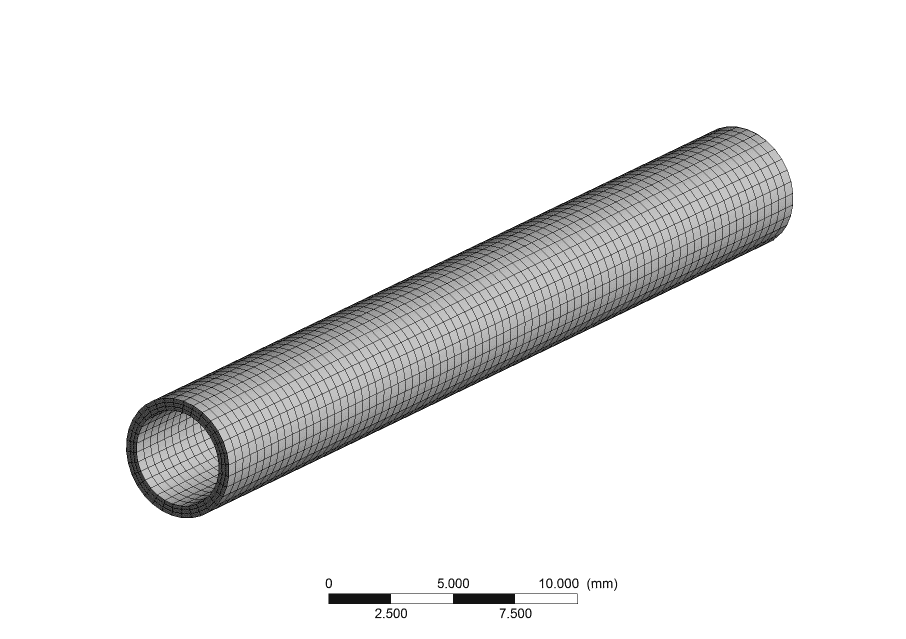
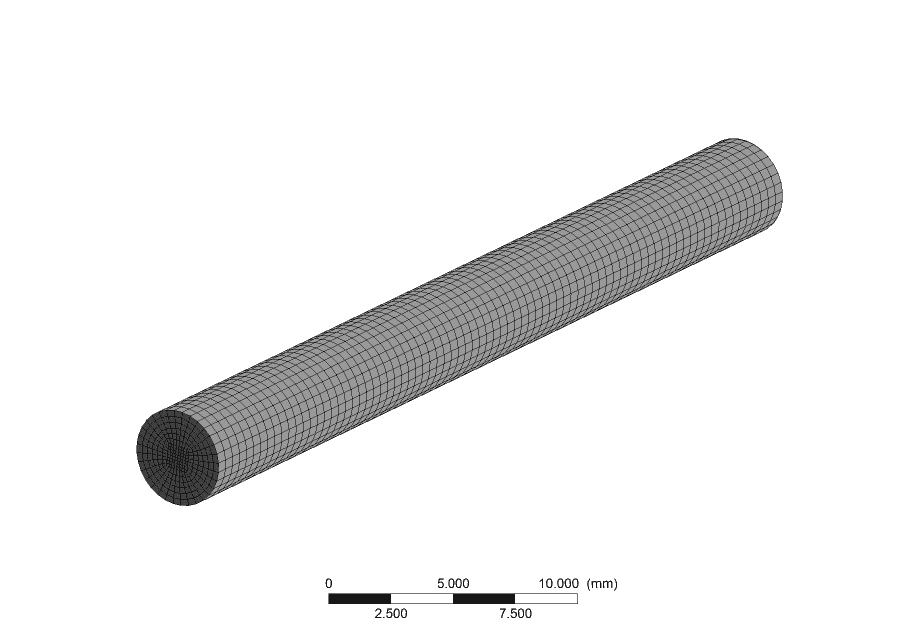
1.3 つのモデルは、単一の FSI 境界に沿って結合されます。 周期的速度プロファイルは流体領域の入口境界で規定されており、周期的入口速度は平均 0.5 m/s であり、この平均の周囲 0 m/s の範囲にあります。 時間 t = 13,332 と t = 0 (秒) の間で 1 Pa から XNUMX Pa まで変化する静ゲージ圧力の線形分布は、この領域の流出境界で規定され、滑りのない断熱境界条件は次のようになります。円筒形の外壁に沿って塗布されます。 動脈を通過する血液は、層流の非圧縮性の流れとしてモデル化されます。

表 1 は、このシミュレーション例の ANSYS Mechanical で動脈構造モデルを定義するために使用されたバルク材料特性を示しています。 血液は、式 1 に示すように粘度とせん断速度を関連付ける Carreau モデルを使用してモデル化されました。 (XNUMX)。

シミュレーションソリューション
シミュレーションが進行するにつれて、動脈内の血液の圧力が上昇し、弾性動脈構造が拡張します。 この流体境界の拡張により、動脈を流れる血液の圧力が低下し、動脈が収縮するのが見られます。 図 3 と 4 のアニメーションは、このシステム カップリング効果を強調しており、この種の流体構造相互作用シミュレーションに伴うマルチフィジックスを視覚的に伝えるのに役立ちます。
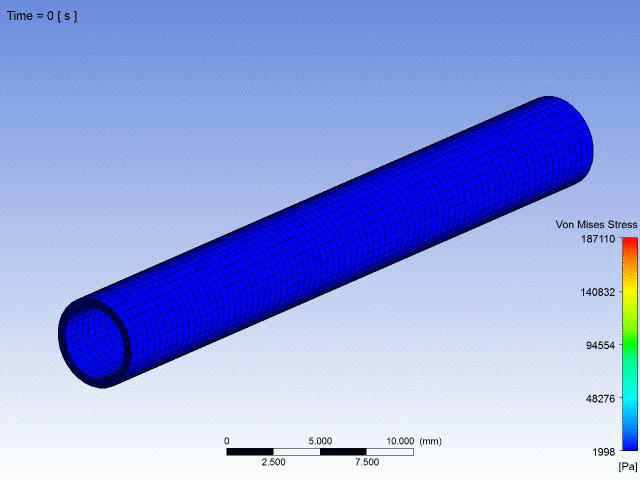
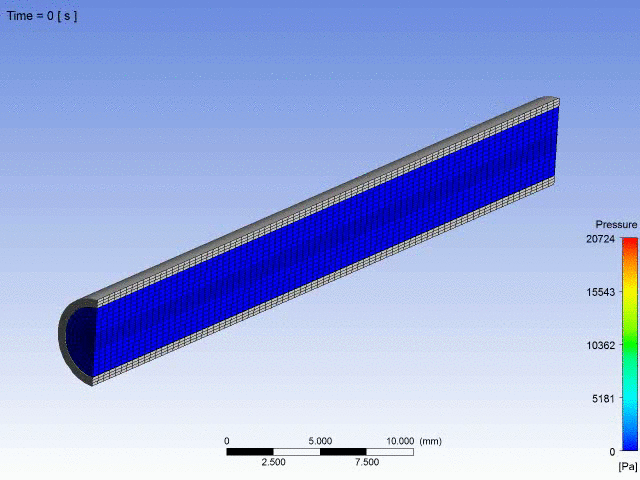
さらに、この動脈壁の変形はより定量的に測定できます。 図 5 は、動脈壁構造の中央を通る平面の初期総変位を示しています。 この初期変位は0.276mmと測定された。
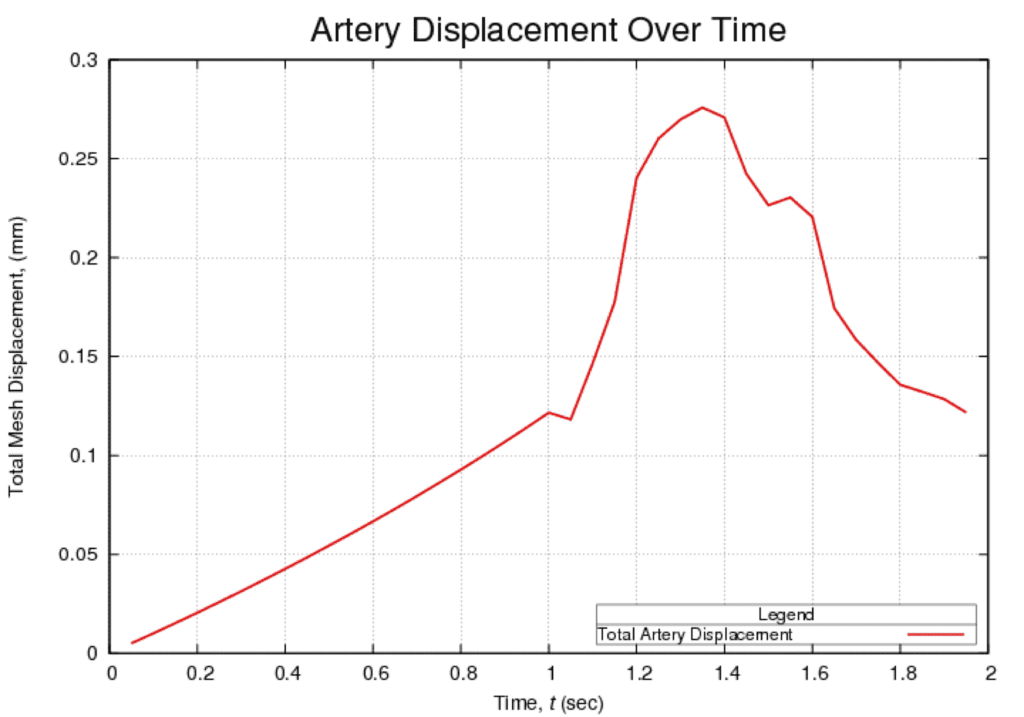
まとめ
エンジニアや科学者が仕事の精度をさらに追求するにつれて、複数の物理的影響が関係する問題をモデル化する必要性により、組織内の複数の競合グループ間で共有される計算リソースの需要が増大しています。 数千万から数億のセルで構成される複雑な分析モデルはこの問題をさらに悪化させ、組織の HPC スケジューラでのキュー時間が長くなります。
その結果、期限が迫っているために分析作業の範囲が縮小されることがよくあります。 Rescale は、エンジニアや科学者が必要なコンピューティング リソースで複雑なマルチフィジックス シミュレーションを遅延なく実行できる、使いやすいオンデマンドの代替手段を提供することで、組織内のこのような混雑した状況を緩和するのに役立ちます。
をクリックすると、Rescale でこのシミュレーションを自分で表示して実行できます。 ここ.








